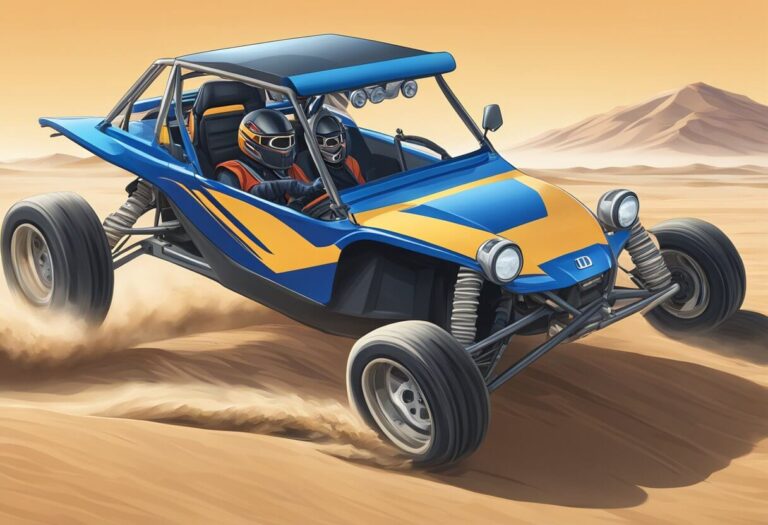Dune Buggy Motor: A Guide to Choosing the Best Engine
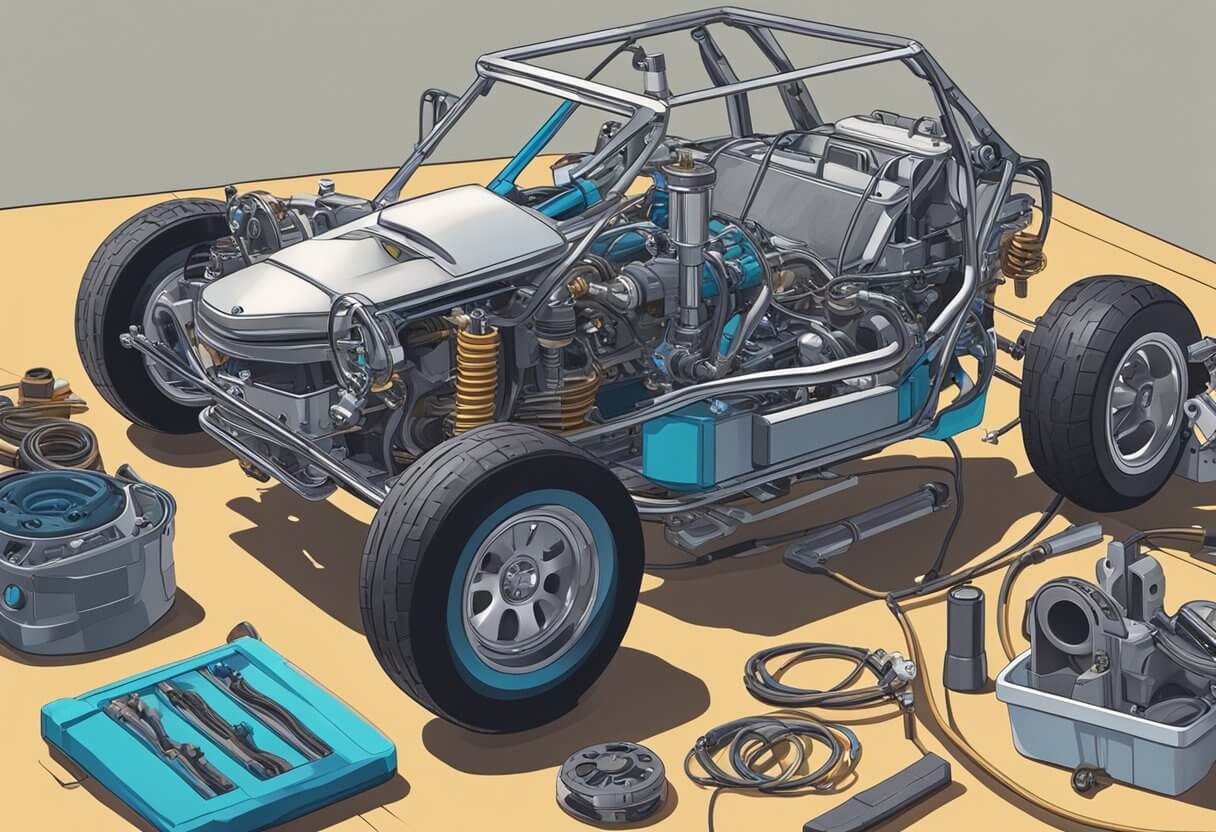
Dune buggies are off-road vehicles designed for use on sandy terrain. They are known for their lightweight construction and open-air design, which allows for a thrilling and immersive driving experience. However, the most important component of a dune buggy is the motor. The motor is responsible for providing the power necessary to traverse the sand dunes and other challenging terrain.
There are several types of motors commonly used in dune buggies. One of the most popular is the VW-based air-cooled engine. These engines are known for their reliability and durability, making them a popular choice among dune buggy enthusiasts. They can be customized to suit the specific needs of the driver, with options for single-port or dual-port 1641cc motors, as well as 1776cc dual-port long block engines.
Another option for dune buggy motors is electric power. Electric motors are becoming increasingly popular in the automotive industry, and dune buggies are no exception. The Meyers Manx 2.0 is a legendary dune buggy that has been updated with an electric motor. This new version is driven by two motors at the rear, with the 40kWh version capable of reaching 0-60 mph in just 4.5 seconds.
Dune Buggy Motor Basics
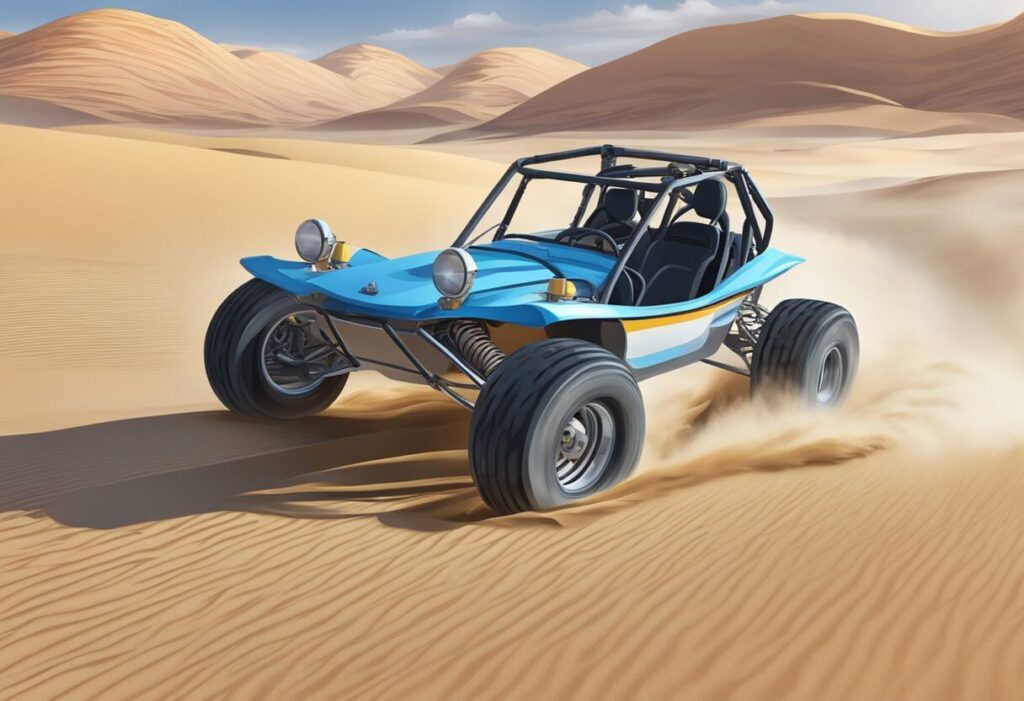
Types of Motors
Dune buggies can be powered by a variety of motors, including gasoline, electric, and diesel. Gasoline engines are the most common and are often sourced from vehicles such as Volkswagen Beetles. Electric motors are becoming more popular due to their efficiency and environmental friendliness. Diesel engines are less common but can provide excellent torque and fuel economy.
Motor Specifications
When selecting a motor for a dune buggy, there are several specifications to consider. These include horsepower, torque, displacement, and cooling system. Horsepower is a measure of the engine’s power output and is important for acceleration and top speed. Torque is a measure of the engine’s twisting force and is important for off-road performance. Displacement is the volume of air and fuel that the engine can burn in one cycle and is important for overall power and efficiency. The cooling system is important for keeping the engine at a safe operating temperature.
Power and Performance
The power and performance of a dune buggy motor depend on several factors, including the type of motor, the specifications of the motor, and the weight of the vehicle. Gasoline engines are typically more powerful than electric motors but are less efficient. Electric motors are more efficient but may not provide the same level of power as gasoline engines. Diesel engines can provide excellent torque and fuel economy but may be heavier than gasoline engines.
Overall, selecting the right motor for a dune buggy requires careful consideration of the vehicle’s intended use and the available options. By understanding the types of motors, motor specifications, and power and performance factors, it is possible to make an informed decision and build a dune buggy that meets your needs.
Electric Dune Buggy Motors
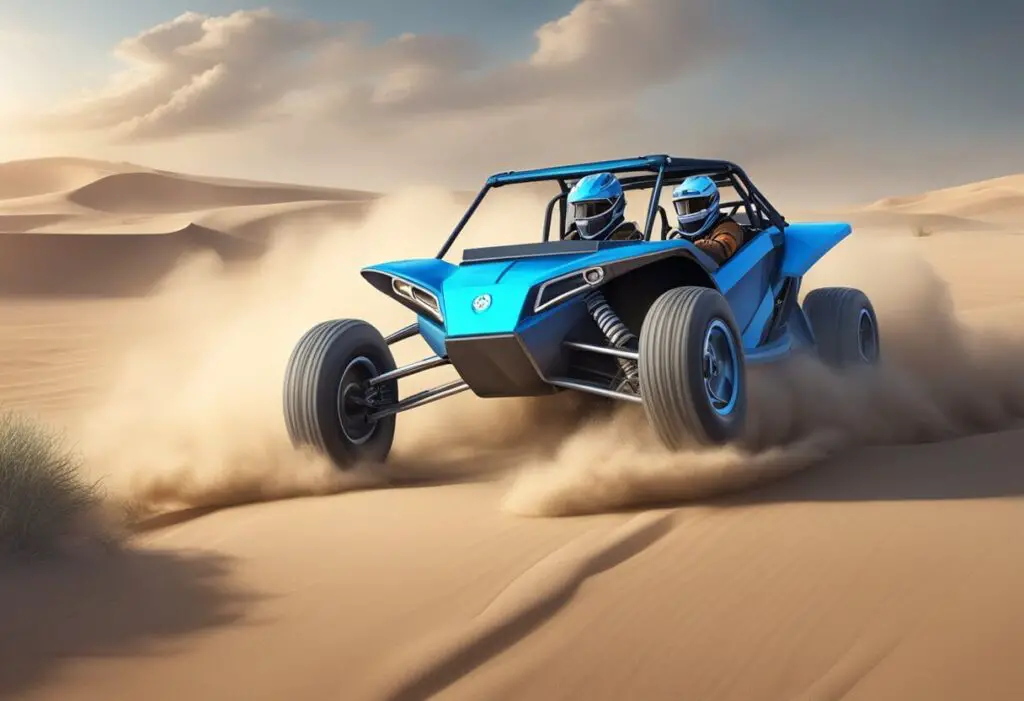
Electric motors are becoming increasingly popular in the automotive industry, and dune buggies are no exception. With advancements in battery technology, electric motors are becoming a viable option for dune buggy enthusiasts. In this section, we will explore the advantages of electric motors, battery technology, and maintenance and care.
Advantages of Electric Motors
Electric motors have several advantages over traditional internal combustion engines. First and foremost, electric motors are much more efficient. They convert a higher percentage of the energy stored in the battery into motion, resulting in less waste heat. This means that electric motors can provide more power to the wheels, resulting in faster acceleration and higher top speeds.
Another advantage of electric motors is that they are much quieter than internal combustion engines. This is a significant benefit for dune buggy enthusiasts who want to enjoy the sounds of nature without the noise pollution of a loud engine.
Electric motors are also more environmentally friendly. They produce zero emissions, making them an excellent option for those who want to reduce their carbon footprint.
Battery Technology
The battery technology used in electric dune buggies has improved significantly in recent years. Lithium-ion batteries are now the standard, offering higher energy density and longer life spans than previous battery technologies. These batteries are also much lighter than their predecessors, which is essential for a dune buggy where weight is a crucial factor.
Charging times for lithium-ion batteries have also improved, with some models offering fast charging times of around 30 minutes. This means that dune buggy enthusiasts can spend more time on the dunes and less time waiting for their batteries to charge.
Maintenance and Care
Maintaining an electric dune buggy is generally less complicated than maintaining an internal combustion engine. There are fewer moving parts, which means there are fewer things that can break or wear out. This translates to lower maintenance costs over the life of the vehicle.
One crucial aspect of maintaining an electric dune buggy is to keep the battery charged. Lithium-ion batteries perform best when they are kept between 20% and 80% charged. Overcharging or undercharging the battery can reduce its lifespan and performance.
Gasoline Dune Buggy Motors
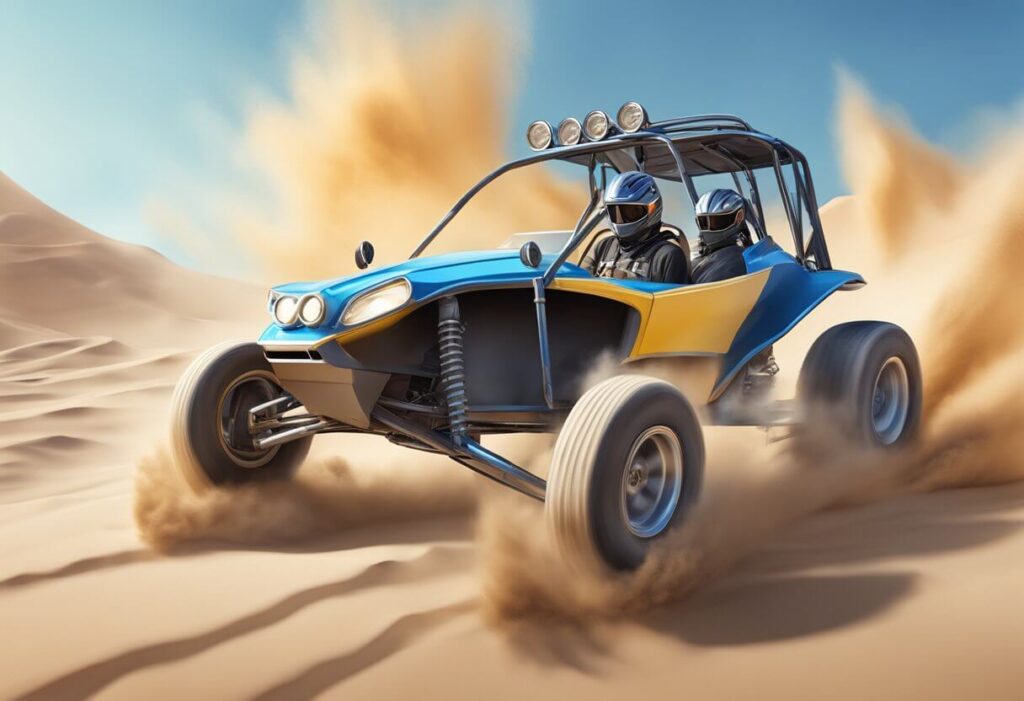
Engine Types
Gasoline engines are the most common type of engine used in dune buggies. These engines are typically air-cooled and are available in a variety of sizes, ranging from 1000cc to 3000cc. The most popular engine type for dune buggies is the Volkswagen Beetle engine, which is known for its reliability and ease of maintenance.
Other popular engine types for dune buggies include the Subaru EJ series engines, which are known for their power and durability. These engines are typically water-cooled and offer a higher level of performance than air-cooled engines. However, they can be more difficult to maintain and may require more frequent repairs.
Fuel Efficiency
Gasoline engines used in dune buggies are not known for their fuel efficiency. These engines typically have a low fuel economy and can consume a lot of gasoline when driven aggressively. However, there are some steps that can be taken to improve fuel efficiency, such as using a smaller engine or driving at a slower speed.
Exhaust and Emissions
Gasoline engines used in dune buggies can produce a significant amount of exhaust and emissions. This can be a concern for those who are environmentally conscious or who live in areas with strict emissions regulations.
To reduce emissions, some dune buggy owners may choose to install aftermarket exhaust systems or catalytic converters. These devices can help to reduce the amount of harmful pollutants that are released into the air. However, it is important to note that not all aftermarket exhaust systems or catalytic converters are legal or effective.
Motor Installation
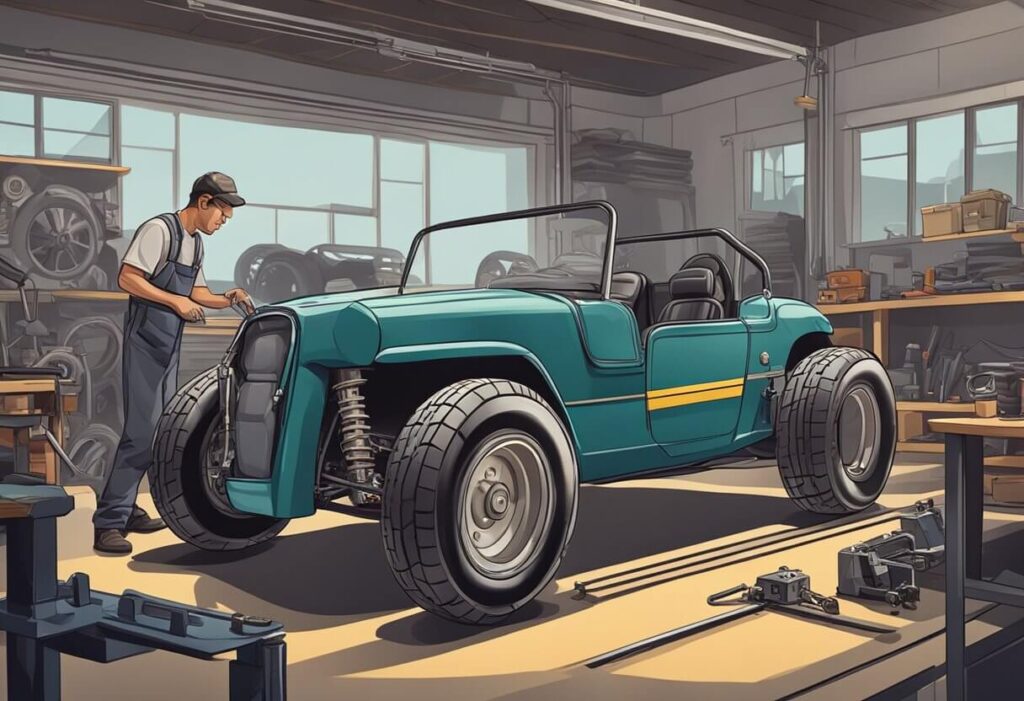
Mounting the Motor
When it comes to mounting the motor of a dune buggy, it’s important to ensure that it is securely fastened to the frame. The first step is to locate the motor mounts on the frame and align them with the corresponding mounts on the motor. Once the motor is in position, bolts or screws can be used to fasten it to the frame.
It’s important to use the correct size and type of bolts or screws to ensure a secure fit. It’s also recommended to use lock washers or thread-locking compound to prevent the bolts or screws from loosening over time.
Wiring and Electrical Connections
Once the motor is mounted, the next step is to connect the wiring and electrical components. This includes connecting the battery, starter motor, alternator, and any other electrical components that are required for the motor to function properly.
It’s important to follow the wiring diagram for the specific motor being installed to ensure that all connections are made correctly. Any loose or incorrectly connected wires can cause the motor to malfunction or fail.
Cooling Systems
Dune buggy motors generate a lot of heat, so it’s important to have a properly functioning cooling system in place. This includes a radiator, fan, water pump, and hoses.
The radiator should be mounted securely to the frame and connected to the motor using hoses. The fan should be mounted behind the radiator and connected to the motor’s electrical system. The water pump should be mounted on the motor and connected to the radiator using hoses.
Regular maintenance of the cooling system, such as checking the coolant level and replacing hoses and belts as needed, can help ensure that the motor stays cool and functions properly.
Motor Maintenance

Maintaining a dune buggy motor is essential for keeping the vehicle running smoothly and safely. Here are some tips for keeping the motor in good condition:
Routine Checks
Performing routine checks on the motor is important for catching potential problems before they become serious. Here are some checks that should be done regularly:
- Check the oil levels: Low oil levels can cause the engine to overheat and seize up.
- Inspect the brakes: Worn or damaged brakes can cause the vehicle to lose control and result in accidents.
- Ensure proper tire inflation: Underinflated tires can cause poor handling and increase the risk of blowouts.
Troubleshooting Common Issues
Despite regular checks, problems can still arise with the motor. Here are some common issues and how to troubleshoot them:
- Overheating: Overheating can be caused by low oil levels, a clogged radiator, or a malfunctioning water pump. Check the oil levels, flush the radiator, and replace the water pump if necessary.
- Hard starting: Hard starting can be caused by a weak battery, a clogged fuel filter, or a faulty starter motor. Check the battery, replace the fuel filter, and replace the starter motor if necessary.
- Loss of power: Loss of power can be caused by a dirty air filter, fouled spark plugs, or a clogged fuel line. Replace the air filter, clean or replace the spark plugs, and clean the fuel line if necessary.
Replacement and Repair
If the motor needs to be replaced or repaired, it is important to use high-quality parts and work with a reputable mechanic. Using cheap parts or inexperienced mechanics can lead to further problems down the line. It is also important to follow the manufacturer’s recommendations for maintenance and repair.
Performance Enhancements
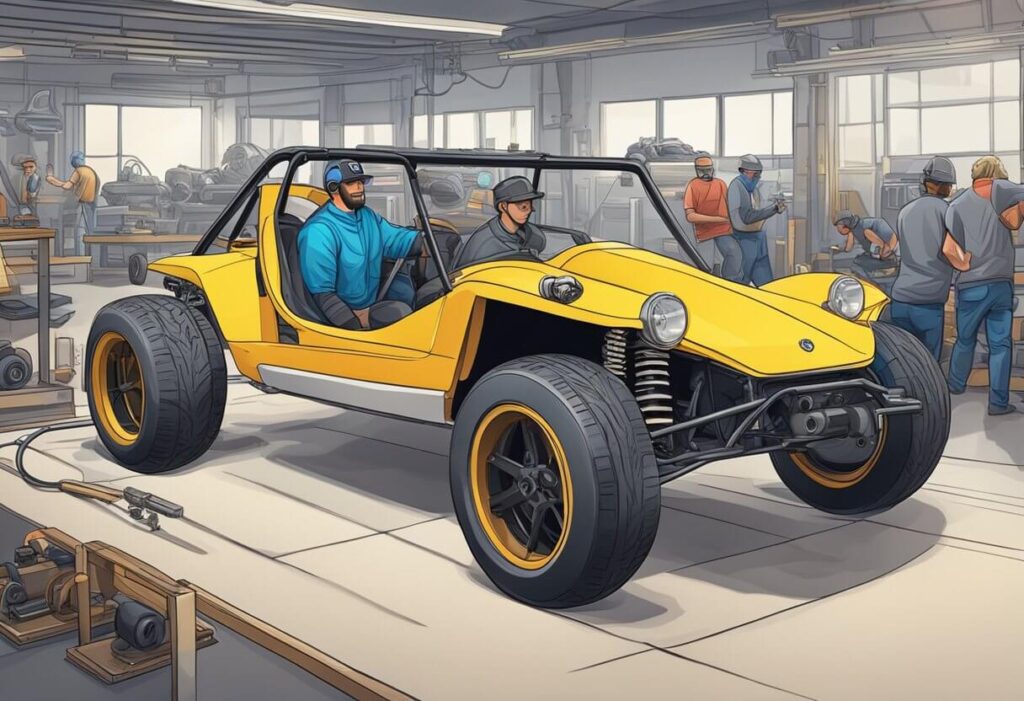
Upgrades and Modifications
Dune buggy enthusiasts are always looking for ways to enhance their vehicle’s performance. There are several upgrades and modifications that can be made to improve the power and speed of a dune buggy. One of the most popular upgrades is to install a high-performance engine. Air-cooled VW engines are commonly used for sand rails and dune buggies, and there are several sizes of performance engines available. These engines can be modified to produce more horsepower and torque, and they are also more reliable than stock engines.
Another popular modification is to upgrade the suspension system. Dune buggies are designed to handle rough terrain, but a high-performance suspension system can make a big difference in the vehicle’s handling and stability. Upgrading the suspension can also improve the vehicle’s ground clearance, which is important when driving over obstacles.
Tuning for Optimal Performance
Tuning is an essential part of getting the most out of a dune buggy’s engine. Tuning involves adjusting the engine’s air/fuel mixture, ignition timing, and other parameters to optimize performance. A well-tuned engine will produce more power and run more efficiently, which translates to better performance on the dunes.
There are several tools and devices available for tuning a dune buggy’s engine. One of the most popular is the air/fuel ratio gauge, which allows the driver to monitor the engine’s air/fuel mixture in real-time. Other tools include timing lights, vacuum gauges, and exhaust gas analyzers.
Aftermarket Parts
There are several aftermarket parts available for dune buggies that can improve performance. One of the most popular is the performance exhaust system. A high-performance exhaust system can increase the engine’s horsepower and torque by reducing backpressure and improving exhaust flow.
Other popular aftermarket parts include high-performance carburetors, camshafts, and intake manifolds. These parts can increase the engine’s power and improve its response and acceleration.
Safety Considerations

When it comes to operating a dune buggy, safety should always be a top priority. There are several safety considerations that should be taken into account before embarking on a dune buggy adventure. This section will cover the protective gear, motor safety features, and legal regulations that should be considered.
Protective Gear
Protective gear is essential for anyone operating a dune buggy. The best way to stay safe is to wear proper safety equipment. This includes a well-fitting safety helmet, gloves, and protective clothing. Long-sleeved shirts and pants are recommended to prevent road rash, and sturdy shoes with good traction are necessary to maintain proper footing while driving.
Motor Safety Features
Dune buggies should be equipped with proper safety features to ensure that they are safe to operate. Some of the most important safety features include seat belts, roll cages, and sturdy windshields. Seat belts are crucial to reduce the risk of serious injury in case of an accident, while roll cages and windshields help protect the driver and passengers from debris and other hazards.
Legal Regulations
It is important to be aware of the legal regulations surrounding dune buggy operation in your area. In some states, dune buggies must be registered and licensed, while in others, they may be considered off-road vehicles and not subject to the same regulations as passenger vehicles. Additionally, some states require dune buggies to have certain safety features, such as windshields and seat belts, in order to be legally operated.
By taking these safety considerations into account, dune buggy operators can ensure that they are operating their vehicles in a safe and responsible manner.
Buying Guide
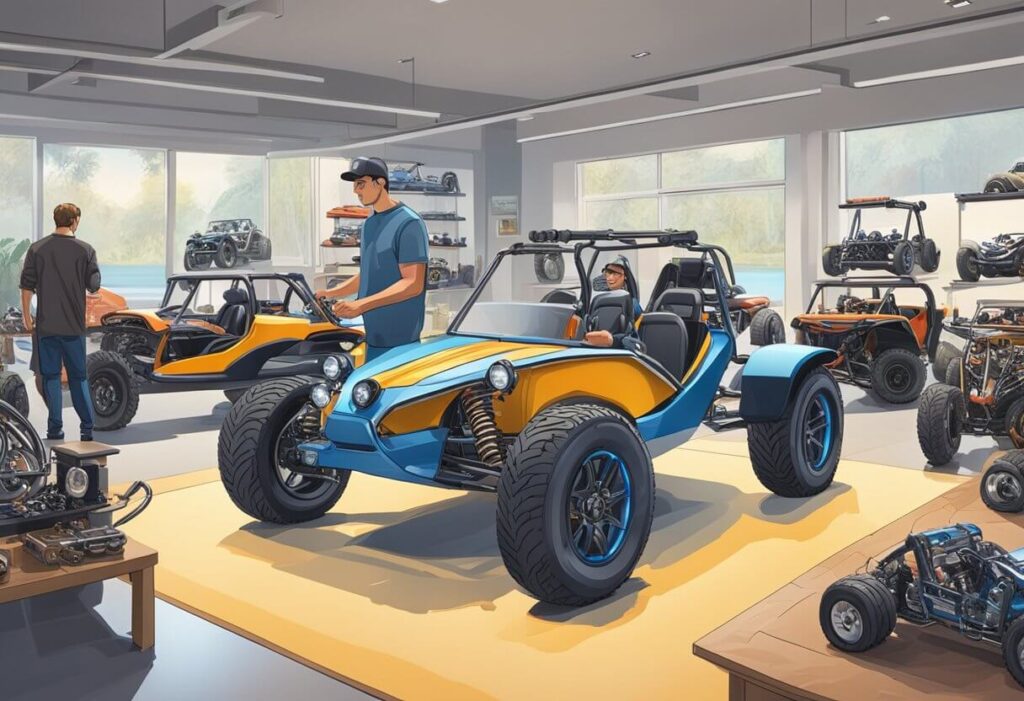
Selecting the Right Motor
When shopping for a dune buggy motor, there are several factors to consider. The size of the engine is one of the most important. A larger engine will provide more power, but it will also be heavier and more expensive. A smaller engine may not provide enough power for your needs. It is essential to choose an engine that will provide the right balance of power and weight for your dune buggy.
Another factor to consider is the type of engine. There are two main types of engines: gasoline and electric. Gasoline engines are more powerful and provide better acceleration, but they also produce harmful emissions. Electric engines are quieter and more environmentally friendly, but they are less powerful and have a shorter range.
Cost Considerations
The cost of a dune buggy motor can vary widely depending on the type and size of the engine. Gasoline engines tend to be more expensive than electric engines, but they also provide more power. It is important to consider the long-term costs of owning a dune buggy, including maintenance and fuel costs.
When shopping for a dune buggy motor, it is also important to consider the cost of installation. Some engines may require modifications to the dune buggy’s frame or chassis, which can add to the overall cost of the project.
Warranty and Support
When purchasing a dune buggy motor, it is important to consider the warranty and support offered by the manufacturer. A good warranty can provide peace of mind and protect you from unexpected repair costs. It is also important to choose a manufacturer that offers reliable customer support and technical assistance.
Before making a purchase, it is a good idea to research the manufacturer’s reputation and read reviews from other customers. This can help you make an informed decision and choose a motor that will provide reliable performance for years to come.




